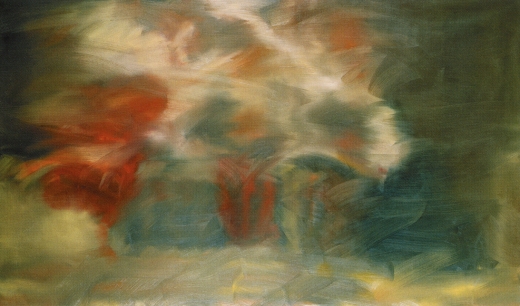
Photography has almost no reality; it is almost a hundred per cent picture. And painting always has reality: you can touch the paint; it has presence; but it always yields a picture – no matter whether good or bad. That's all the theory. It's no good. I once took some small photographs and then smeared them with paint. That partly resolved the problem, and it's really good – better than anything I could ever say on the subject"."
Some of Gerhard Richter's Photo Paintings
Painting from photographs seemed a radical move when he began to do so in the early 1960s. In retrospective, Richter seems to fit into a tradition of precise and melancholy northern European painters going back to Vermeer of Delft, who may have used prephotographic optical equipment himself.

Photo Paintings: Baader-Meinhof

S. with cild/S. mit kind, 1995, 36 cm x 41 cm, oil on canvas,
Photo Paintings: Mother and Child
Using photography and optical aids doesn’t make producing a good painting any easier. Richter is doing a great deal more than simply copying a photograph. The blurring, for example, is often not there in his source. It’s a quality that Richer adds or accentuates to help the picture function. The final result is mysteriously individual, part of Richter’s artistic world, in the same way that Vermeer’s work is indefinably Vermeer-ish.

Annunciation after Titian/Verkündigung nach Tizian, 1973, 150 cm x 250 cm, oil on canvas
Photo Paintings: Old Master Inspired

Party, 1963, 150cm x 182 cm, mixed media
Photo Paintings: Everyday Life
Richter’s photo-based paintings have been hugely influential. Yet none of his imitators have managed to attain the elusive mood that makes his work memorable. That is a sign of his quality.